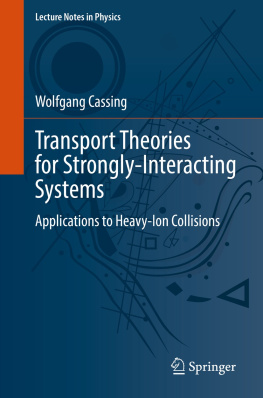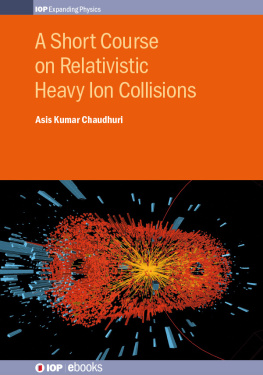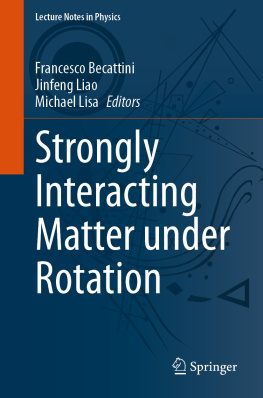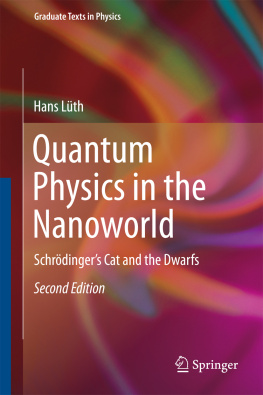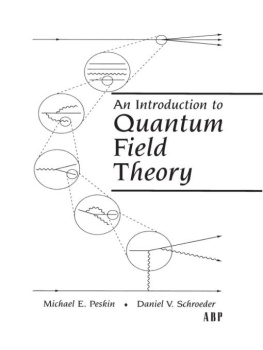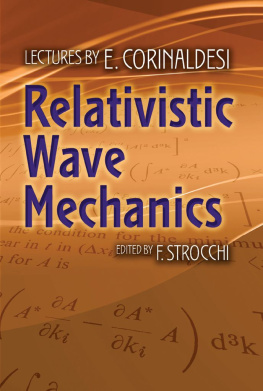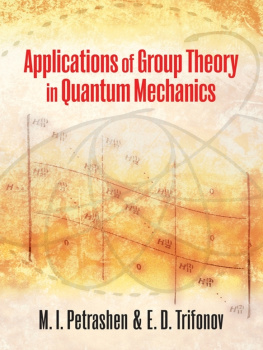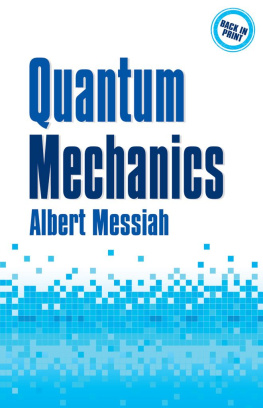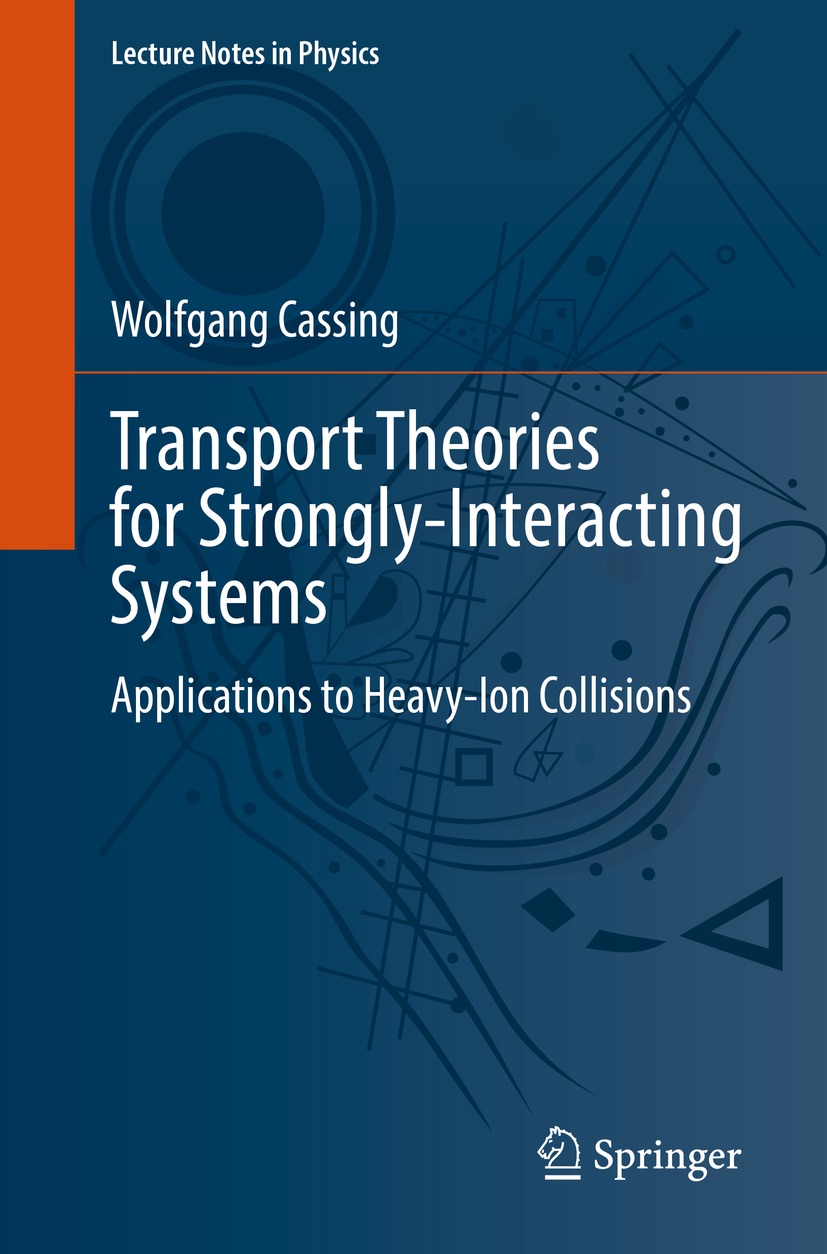Volume 989
Lecture Notes in Physics
Series Editors
Roberta Citro
Salerno, Italy
Peter Hnggi
Augsburg, Germany
Morten Hjorth-Jensen
Oslo, Norway
Maciej Lewenstein
Barcelona, Spain
Angel Rubio
Hamburg, Germany
Wolfgang Schleich
Ulm, Germany
Stefan Theisen
Potsdam, Germany
James D. Wells
Ann Arbor, MI, USA
Gary P. Zank
Huntsville, AL, USA
Founding Editors
Wolf Beiglbck
Heidelberg, Germany
Jrgen Ehlers
Potsdam, Germany
Klaus Hepp
Zrich, Switzerland
Hans-Arwed Weidenmller
Heidelberg, Germany
The Lecture Notes in Physics
The series Lecture Notes in Physics (LNP), founded in 1969, reports new developments in physics research and teaching - quickly and informally, but with a high quality and the explicit aim to summarize and communicate current knowledge in an accessible way. Books published in this series are conceived as bridging material between advanced graduate textbooks and the forefront of research and to serve three purposes:
to be a compact and modern up-to-date source of reference on a well-defined topic;
to serve as an accessible introduction to the field to postgraduate students and non-specialist researchers from related areas;
to be a source of advanced teaching material for specialized seminars, courses and schools.
Both monographs and multi-author volumes will be considered for publication. Edited volumes should however consist of a very limited number of contributions only. Proceedings will not be considered for LNP.
Volumes published in LNP are disseminated both in print and in electronic formats, the electronic archive being available at springerlink.com. The series content is indexed, abstracted and referenced by many abstracting and information services, bibliographic networks, subscription agencies, library networks, and consortia.
Proposals should be sent to a member of the Editorial Board, or directly to the responsible editor at Springer:
Dr Lisa Scalone
Springer Nature
Physics
Tiergartenstrasse 17
69121 Heidelberg, Germany
lisa.scalone@springernature.com
More information about this series at http://www.springer.com/series/5304
Wolfgang Cassing
Transport Theories for Strongly-Interacting Systems
Applications to Heavy-Ion Collisions
1st ed. 2021

Logo of the publisher
Wolfgang Cassing
Theoretical Physics, University of Gieen, Gieen, Germany
ISSN 0075-8450 e-ISSN 1616-6361
Lecture Notes in Physics
ISBN 978-3-030-80294-3 e-ISBN 978-3-030-80295-0
https://doi.org/10.1007/978-3-030-80295-0
The Editor(s) (if applicable) and The Author(s), under exclusive license to Springer Nature Switzerland AG 2021
This work is subject to copyright. All rights are solely and exclusively licensed by the Publisher, whether the whole or part of the material is concerned, specifically the rights of translation, reprinting, reuse of illustrations, recitation, broadcasting, reproduction on microfilms or in any other physical way, and transmission or information storage and retrieval, electronic adaptation, computer software, or by similar or dissimilar methodology now known or hereafter developed.
The use of general descriptive names, registered names, trademarks, service marks, etc. in this publication does not imply, even in the absence of a specific statement, that such names are exempt from the relevant protective laws and regulations and therefore free for general use.
The publisher, the authors and the editors are safe to assume that the advice and information in this book are believed to be true and accurate at the date of publication. Neither the publisher nor the authors or the editors give a warranty, expressed or implied, with respect to the material contained herein or for any errors or omissions that may have been made. The publisher remains neutral with regard to jurisdictional claims in published maps and institutional affiliations.
This Springer imprint is published by the registered company Springer Nature Switzerland AG
The registered company address is: Gewerbestrasse 11, 6330 Cham, Switzerland
Preface
This book provides an overview on transport theories for readers from different fields although the actual applications and especially the relativistic off-shell transport theory are of particular interest for physicists working in the field of relativistic strong-interaction physics such as relativistic or ultra-relativistic heavy-ion collisions or the evolution of the early universe. Instead of giving hand-waving arguments for transport models in various fields, the focus here is on a thorough derivation of the transport equations and a careful analysis of the approximations employed. In order to keep the arguments and extensions in line, a multitude of Appendices is added that partly recall elements of elementary lectures on quantum mechanics or present examples for specific models. As for basic knowledge, the reader should be familiar with quantum mechanics and its principles as well as some basic concepts of the quantum many-body physics and field theory. Furthermore, the reader should not be afraid of sometimes lengthy equations and derivations that are mandatory for a stringent mathematical derivation and allow to point out relevant approximations. The detailed formulations allow for independent numerical studies that provide a space-time movie of nonequilibrium dynamics of weakly and strongly interacting many-body systems. Exercises are incorporated throughout the chapters and are expected to deepen an understanding of the material presented.
The contents of this work have been developed with my PhD students and collaborators over a period of about 35 years and has led to some deeper insight into the physics of strongly interacting systems in and out of equilibrium, especially in comparison to experimental data from worldwide accelerator facilities. I hope the reader will enjoy reading and find helpful sections for his or her own research.
Wolfgang Cassing
Gieen, Germany
May 2021
Acknowledgements
This book results from the collaboration with many friends and collaborators throughout roughly 35 years of common research. These are Wolfgang Bauer, Tamas Biro, Bernhard Blttel, Elena Bratkovskaya, Wolfgang Ehehalt, Carsten Greiner, Jochen Geiss, Jrn Huser, Sascha Juchem, Volker Koch, Volodya Konchakovski, Andreas Lang, Olena Linnyk, Tomoyuki Maruyama, Pierre Moreau, Ulrich Mosel, Koji Niita, Vitalii Ozvenchuk, Alessia Palmese, Andreas Peter, Alfred Pfitzner, Pradip Sahu, Eduard Seifert, Taesoo Song, Thorsten Steinert, Stefan Teis, Markus Thoma, Viacheslav Toneev, Vadim Voronyuk, Shun-Yin Wang, Klaus Weber and Gyuri Wolf. Furthermore, I am indebted to Elena Bratkovskaya and Olga Soloveva for valuable suggestions throughout the preparation of this work and in particular to Elena Bratkovskaya for her help in preparing the illustrations and figures.
Acronyms
AMD
Antisymmetric molecular dynamics

